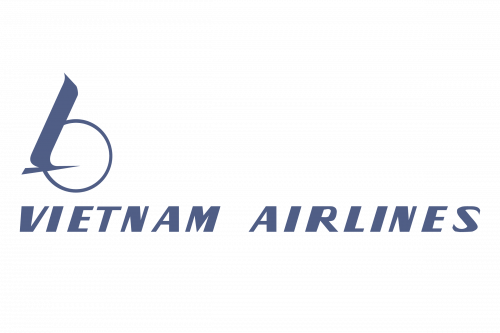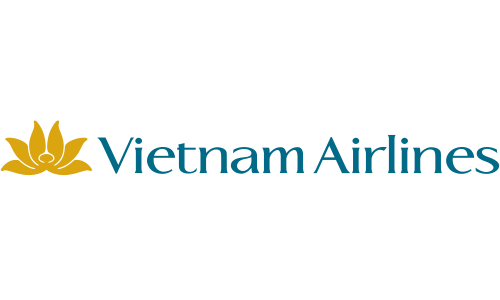Vietnam Airlines is the name of one of the oldest and most trusted airway companies in Vietnam, which was established in 1956 as Vietnam Civil Aviation. Today it is the main air carrier in its country, with yearly revenue of about 2 million USD.
Meaning and history
The visual identity of the Vietnamese company has dramatically changed just once in its history, in 2002. The original logo, created in 1956 stayed with the air carrier for almost four decades, which says a lot about the stability and confidence of the company.
1956 – 2002
The first logo for Vietnam Airlines was designed in 1956 and featured a very elegant and light combination of a graphical emblem and a logotype written along the bottom line. The whole image was executed in light purple lines and usually placed on a white background. This palette looked airy and tender, symbolizing air and freedom.
The original Vietnam Airlines emblem featured a stylized image of a burg with the lines of its wings emboldened and elongated, stretched up and to the sides. The bird was flying to the left and was passing a circular contour, which stood for the sun.
As for the inscription, it was set in the uppercase with its bold geometric sans-serif letters italicized.
2002 – 2015
The redesign of 2002 brought a new image to the company and a completely new symbol. The flying burg was replaced by a golden lotus, but this was not the only change. The concept was completely redrawn.
The new logo of Vietnam Airlines featured bold blue lettering in a fancy and elegant typeface, with only two letters capitalized. The wordmark was set on the right from the new emblem — a solid and smooth image of the lotus in a dark gold shade.
2015 – Today
Minor changes were made to the Vietnam Airlines visual identity in 2015. The golden lotus remained untouched, just became a bit smaller in comparison to the previous version. The only visible thing was about the lettering, which kept its nice and calm shade of blue but switched its typeface to a cleaner and more modern one, with distinct bold lines of its smooth letters.











